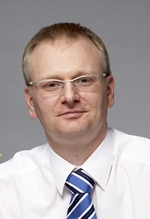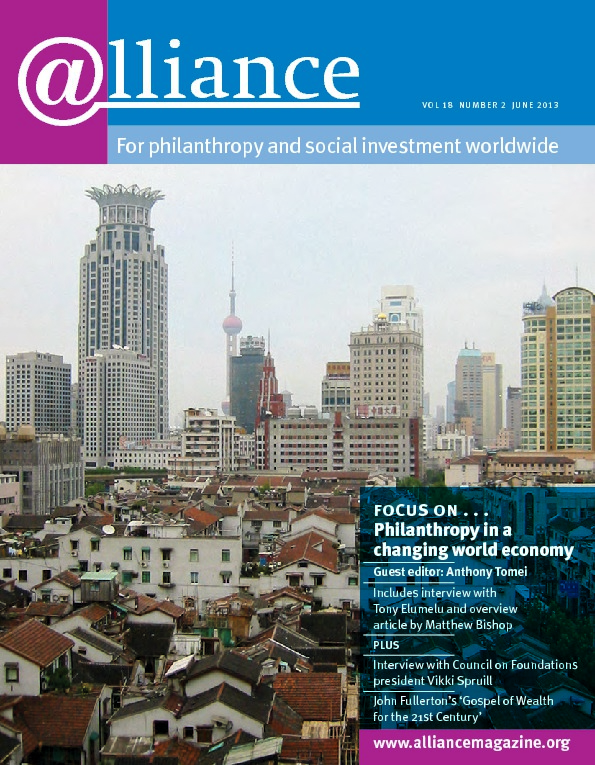Stakeholder involvement is one of the current buzz-phrases in philanthropy as more and more foundations are thinking about how to involve beneficiaries. But does it work? Research into youth giving programmes from around the world suggests that it creates benefits not only for the foundation’s target group but also for the foundation itself and for society as a whole.
 In 2012-13, Active Philanthropy and the German charity Children for a Better World looked at how foundations and other grantmaking organizations involve children and young people in grantmaking decisions and found a growing international trend – one that goes back a long way [1]. In Michigan in the 1980s, as part of the Kellogg Foundation Youth Challenge, community foundations received almost $48 million to create 86 permanently endowed youth funds, matched by more than $100 million raised locally. Each of those funds is overseen by a youth advisory committee (YAC) [2]. The YACs develop grantmaking programmes, request and analyse proposals, and present proposals to the community foundation’s board for final approval. Most of the YACs, which involve more than 1,500 young people annually, also raise funds in order to increase or secure their budget.
In 2012-13, Active Philanthropy and the German charity Children for a Better World looked at how foundations and other grantmaking organizations involve children and young people in grantmaking decisions and found a growing international trend – one that goes back a long way [1]. In Michigan in the 1980s, as part of the Kellogg Foundation Youth Challenge, community foundations received almost $48 million to create 86 permanently endowed youth funds, matched by more than $100 million raised locally. Each of those funds is overseen by a youth advisory committee (YAC) [2]. The YACs develop grantmaking programmes, request and analyse proposals, and present proposals to the community foundation’s board for final approval. Most of the YACs, which involve more than 1,500 young people annually, also raise funds in order to increase or secure their budget.
 In Canada, community foundations have developed the Youth in Philanthropy Canada programme, which combines grantmaking experience for young people with training in designing projects, raising funds and developing funding applications. Today the Canadian community foundations probably run the biggest network of foundation youth advisory councils in the world. Another example is the youth-led Youth Banks driven by the Community Foundation of Northern Ireland and several UK-based community foundations. (Pictured: a young grantmaker from the YouthBank Ireland network completes her accredited grantmaking skills coursework, April 2011.)
In Canada, community foundations have developed the Youth in Philanthropy Canada programme, which combines grantmaking experience for young people with training in designing projects, raising funds and developing funding applications. Today the Canadian community foundations probably run the biggest network of foundation youth advisory councils in the world. Another example is the youth-led Youth Banks driven by the Community Foundation of Northern Ireland and several UK-based community foundations. (Pictured: a young grantmaker from the YouthBank Ireland network completes her accredited grantmaking skills coursework, April 2011.)
At Stuttgart Community Foundation youth participation has been a logical consequence of their regular work with the Stuttgarter Kindertaler, a fundraising project to support children and youth projects. Since 2008, the community foundation has funded three children’s projects every two years. In 2011, children rather than adults chose the projects. About 160 youngsters aged 9 to 13 looked at the different projects, discussed their strengths and weaknesses in small teams, and voted on the allocation of €20,000 between three projects. The community foundation learned a lot about what is important to young people in their city.
At the Dutch organization Pekoenja, an offshoot of the Stichting Kinderpostzegels, young people between 16 and 23 are not only responsible for the complete grantmaking budget, amounting to about €150,000 per year, but also actively involved in all important decisions regarding the organization’s operations and strategy.
The benefits of these initiatives are clear: evaluations of US- and Canadian-based programmes attest to young people’s enhanced self-confidence, greater awareness of social issues and willingness to become involved, and improved discussion and presentation skills. Foundations that have tried youth participation are often enthusiastic about young people’s intuitive power to judge and their fresh ideas which, combined with the foundation’s experience, often lead to completely new solutions to social challenges. Involving a foundation’s target group in grantmaking decisions is often a first step towards more extensive participation in the foundation’s governance bodies, thus allowing for some influence on the organization’s programme design and strategy.
What are the factors that help to make these experiments successful? First, those involved from the target group should work on ‘real’ projects and topics that are relevant for their lives. The foundation has to see them as real partners on equal terms, which involves relinquishing some control. Furthermore, successful participation needs sufficient resources of time to establish mutual connections and trust; finances to provide a realistic budget; and personnel to ensure continuous and professional coaching and coordination.
We hope that the positive experience of these youth giving programmes will encourage more foundations to make grantmaking and other important decisions together with members of their target groups rather than simply on their behalf.
Gabriele Störmann and Michael Alberg-Seberich are respectively, project manager and managing partner of Active Philanthropy. Emails stoermann@activephilanthropy.org and alberg-seberich@activephilanthropy.org
[1] The report is available in German at http://www.children.de/kinderbeirat
[2] http://www.youthgrantmakers.org/mcfyp






Comments (0)